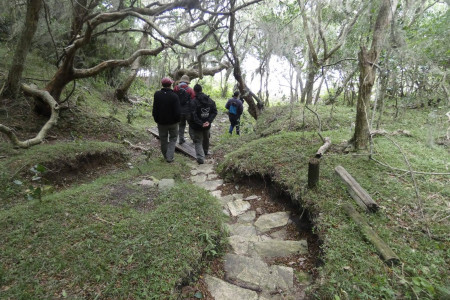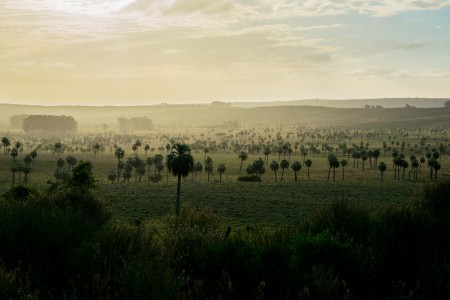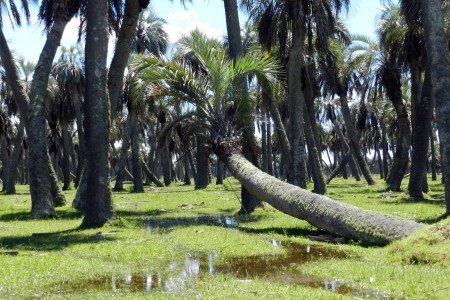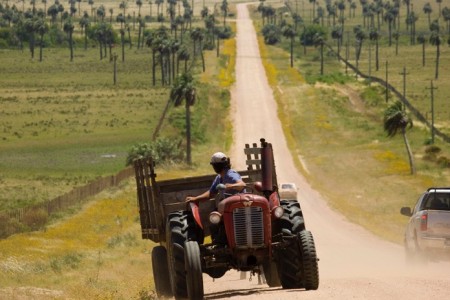Palmares of Rocha: unique in the world
One of the biggest and most famous attractions of Rocha is its group of palm trees of Butia covering an area of 70,000 hectares. The Palmares are located around the city of Castillos, on the Camino de los Indios, on July 18 and partly on the East Wetlands to the border with Brazil. They belong to the Bañados del Este-East Marshes Biosphere Reserve, declared as such in 1976 by UNESCO. It is an ecosystem composed of diverse species of plants and animals, an authentic forest that grows in plains, hills and flood zones.
The palm grove is considered one of the representative landscapes of Rocha. It is present in the official symbols of the department, in poetry and folk music of the region.

The palm tree
The palm tree is a species of Uruguay and Brazil. The variety Butia odorata, is distinguished from the other palm trees by the ash-green color of its leaves and its trunk measures between 7 and 9 meters high and reaches 60 cm in diameter. Each palm tree is composed of 25 leaves of 2 and 3 meters long, and they renew about 14 per year. The leaves have a central axis called rachis and from this the individual leaves called pinnae grow. The palm tree butiá is not at risk of extinction, but the palmar is, today composed mostly of palm trees that are between 200 and 300 years old.

Its fruit: the butiá
The fruit of this palm tree, the butiá, is yellowish orange, with a bittersweet taste. Liquors, marmalades, jams, jellies and sauces are made with the artisanal wisdom of the land of the palms. Flowering usually begins in January, although old plants do not flower every year. The butiá matures in the first half of April. Each product contains the best flavors that grow in the east of the country and the local traditions passed down by generations of families. No one who visits Rocha should miss trying their butiá liquor, a unique product in Uruguay.

Coffee and honey
The seeds, ground and roasted, are used to make coconut coffee that is taken as an infusion, mixed with milk, or others prefer to add them to mate. They are rich in high-calorie oil. In addition, honey produced by bees in the palmar area is based mainly on butia pollen, which gives it a light amber color and high quality.
What is the origin of the Palmares de Rocha?
There are many fantasies about the origin of the Palmares de Rocha. Some believe that the indigenous people who made pilgrimages, in their way, were leaving seeds or stones of butia, yatay and other plants of that type. Others associate this ecosystem with the migrations of birds that brought the seeds and irrigated them in different areas. No doubt there was a transfer by humans and animals that used palm trees in their diet, but it was made from palm trees whose natural area of occurrence on Earth was already this.









